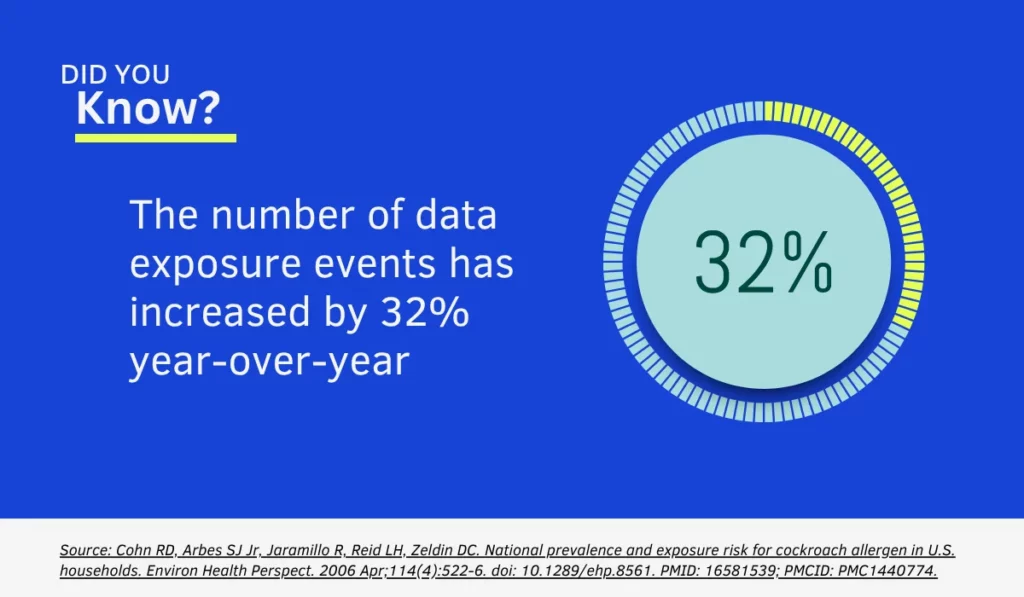Cybersecurity
8 Tips for Safe Online Shopping
Patrick Sullivan

Most organizations focus their cybersecurity strategies on external threats. Firewalls to stop hackers, endpoint protection to block malware, and phishing simulations to catch suspicious emails. But what if the most significant risk isn’t out there?
According to Cybersecurity Insiders, 83% of security teams experienced at least one insider threat incident last year. Even more alarming, the number of organizations hit by 11 to 20 insider attacks jumped fivefold. And it’s not just a fluke: FinancesOnline reports that six out of every ten data breaches now originate from insiders.
Insider threats aren’t limited to angry employees stealing intellectual property or former staff logging in after they’ve left. Some incidents stem from accidental oversharing of sensitive information. Others involve hijacked accounts or misused permissions. The warning signs are often subtle: a spike in user activity, a quiet exfiltration of trade secrets, or a lapse in security policies that lets a contractor view regulated files.
CISA defines insider threats as “the threat that an insider will use their authorized access, wittingly or unwittingly, to harm the department’s mission, resources, personnel, facilities, information, equipment, networks, or systems.”
Insider threats aren’t just technical; they’re complex business risks rooted in human behavior, excessive permissions, and lack of operational visibility.
When people hear the term “insider threat,” they picture a rogue employee stealing trade secrets for financial gain. But most insider incidents don’t look like espionage; they look like negligence.
StationX states that 76% of organizations have detected increased insider threat activity over the past five years, and in 2023, 71% of companies experienced between 21 and 40 insider security incidents per year, up 67% from 2022.
A salesperson uploads a full client list to their personal Google Drive before quitting. A former employee retains authorized access weeks after termination. A help desk rep clicks a phishing link and unknowingly opens a backdoor. This isn’t an external hack. It’s access abuse, often undetected, usually preventable.
Your business thrives on collaboration, including cloud drives, Git repositories, messaging tools, and integrated apps.

The transition to remote and hybrid work environments has significantly impacted data security. According to Code42’s 2023 Annual Data Exposure Report, there has been a 32% year-over-year increase in insider-driven data exposure incidents, highlighting the challenges posed by these new work models.
However, that convenience creates a blurred line between legitimate work and data theft. Sensitive information flows freely, often without user access controls or visibility into who’s doing what.
Legacy defenses don’t help. Firewalls weren’t designed to stop authenticated users from misusing access. Most organizations lack real-time monitoring of user activity, permissions, or insider threat indicators that flag risk before damage is done.
If you don’t have visibility, you can’t prevent the threat.
Security teams group insider events into three types of insider threats:
The National Insider Threat SIG analyzed more than 5,400 insider incidents and found every major industry represented, from healthcare clinics leaking patient charts to defence contractors losing schematics. Whether the trigger is revenge, confusion, or ransomware, the impact is the same: stalled business operations, shattered trust, and regulatory pain.
A single data leak can trigger lawsuits, lost contracts, and executive fallout. Intellectual‑property loss is harder to quantify, yet future revenue shrinks overnight when design files or proprietary algorithms walk out the door. After forensics teams declare “incident closed,” customers and investors remember the breach headline.
Perimeter defenses assume hackers come from outside. But insiders already own credentials, so controls must shift from “where did the traffic come from?” to “should this user, in this context, access this resource right now?” This is where Zero Trust Architecture becomes essential, it assumes no user or device is inherently trusted and continuously validates access. That shift requires three ingredients:
When a project manager uploads thousands of invoices to Dropbox at 2 a.m., the system should understand that behavior is new, compare it to insider threat indicators (large data aggregation, after‑hours access, unusual file types), and trigger containment before the invoices hit the grey market.
Effective insider threat mitigation rests on layered, mutually reinforcing controls rather than a single product. Think of the program as four overlapping circles: data, identity, monitoring, and culture.
Begin with an audit to identify and classify sensitive data across your cloud drives, email systems, and application databases. Discover where your organization stores customer PII, medical charts, CAD drawings, and trade‑secret source code. Tag each item so DLP engines recognise when a spreadsheet of cardholder data leaves the finance folder. Without this inventory, you cannot apply precise security controls or prove compliance to auditors.
Map every role to explicit permissions using role‑based access control. Rotate privileged credentials regularly, delete stale accounts the day employment ends, and require hardware‑backed multi‑factor authentication on admin consoles. These habits lower the blast radius when, not if, an account is corrupted.
Stream file‑system telemetry, VPN logs, and cloud‑app events into a SIEM or XDR that supports real‑time analytics. Feed that engine risk signals from Microsoft 365 Insider Risk Management or similar platforms. Low‑risk anomalies prompt coaching and policy reminders; high‑risk sequences (significant exports, privilege escalation, and external email) escalate to containment.
Security measures are ineffective if employees bypass them. Quarterly micro‑learning, internal podcast interviews with the CISO, and gamified phishing drills hard‑wire vigilance. Celebrate catching phish in public channels to normalise reporting suspicious messages rather than ignoring them.
Insider threat detection isn’t about watching for isolated events but understanding patterns. A one-time file download may not trip alarms. However, it becomes a red flag when paired with user behavior analytics, baseline comparisons, and deviations from normal access routines.
Consider a developer who normally pulls small updates from a Git repository. Suddenly, they extract multiple gigabytes of code, compress it, and rename the archive. Without context, it looks like noise. With real-time monitoring and behavior modeling, it jumps to the top of your insider risk dashboard.
The same logic applies in healthcare. If an employee accesses patient records unrelated to their assigned caseload, HIPAA-triggered access controls and auditing policies should flag the breach immediately. In government systems, plugging a personal device into an air-gapped workstation activates counterintelligence-grade controls like automatic drive lockdown and endpoint security alerts.
This goes beyond logging. It connects user actions, permissions, and intent to detect threats. Done well, it turns hours of reactive triage into minutes of decisive prevention.
Even the strongest program sees breaches. What separates disaster from inconvenience is how calmly you follow a script. Your IR plan must define contact trees, evidence‑preservation steps, legal cues, and recovery windows.
DITMAC’s 13 insider‑risk thresholds offer a clear template: espionage suspicions escalate directly to counterintelligence officers, whereas accidental email leaks route through privacy counsel.
Schedule tabletop drills with executives and department leads. Clarity buys minutes, and minutes decide whether data loss remains internal or becomes a public scandal.
Healthcare records command a premium on dark‑web forums. Attackers harness social engineering to phish clinicians, install malware on endpoints, or coerce overworked staff into shortcuts. Finance houses trade secrets in pricing algorithms and risk models. In both sectors, insider incidents compound regulatory fines: HIPAA penalties soar, and SEC rules force material‑incident disclosures within days.
By aligning insider defences with sector‑specific frameworks (NIST 800‑53 for hospitals, FFIEC guidelines for banks), you convert compliance overhead into data protection value, shielding patients and shareholders.
Insider‑risk management is not a quarterly sprint; it is a continuous muscle. Add weekly risk metrics to your operations meetings: number of privileged accounts, average patch latency, and count of unreviewed DLP alerts. Publish victory stories when frontline teams thwart insider attacks; nothing boosts adoption like peer recognition. Over time, vigilance morphs from the mandate to a reflex.
Delivering all of the above takes headcount and specialized skills. We step in with an end‑to‑end service model:
Clients gain a mature insider threat program in months, not years, without hiring a dozen niche engineers.
When it comes to insider threats, hope won’t stop a breach, and ignoring insider risks won’t make them go away.. Whether scaling rapidly, operating in hybrid environments, or managing sensitive IP, every organization needs visibility into how trusted users interact with critical systems. Once damage occurs, it’s too late to wish for stronger access controls or a solid response plan.
You’ll get a risk consultation designed to transform how you manage insider threats.
We’ll work side-by-side with your security, IT, and compliance leads to:
There’s no cost to get started, just the commitment to address your most overlooked cybersecurity risk.
Trust is essential, but it becomes your organization’s network’s biggest vulnerability without visibility. The future of secure business operations depends on keeping outsiders out and knowing exactly what’s happening within.
Build a system that verifies trust, not just assumes it.
Book your complimentary insider threat risk consultation today.
Learn more about how Parachute helps align IT operations with long-term business resilience and growth.
Your data. Your people. Your reputation. Protected.